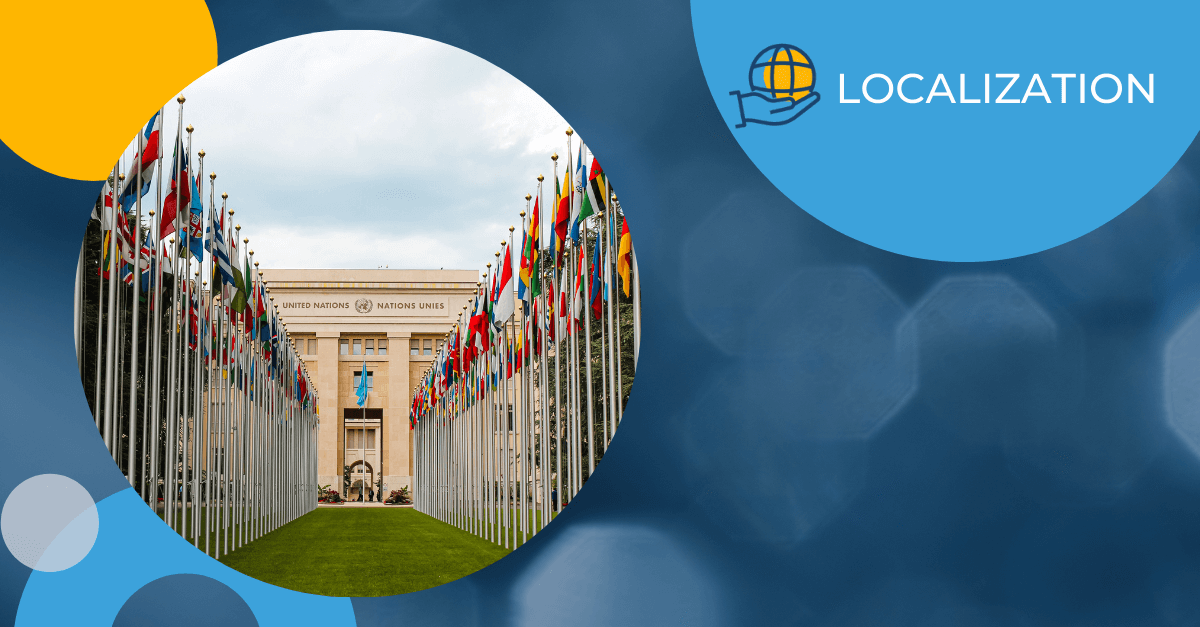Today the globalization of organizations isn’t uncommon. Organizations across varying industries have much to gain by expanding their customer base and workforce abroad, which often means being able to communicate in their language, which will require you to implement a localization strategy.
When your business reaches beyond the borders of your home country, simply translating the words of your business materials into a foreign language is not sufficient for building your brand abroad. A well-thought-out localization strategy is essential in ensuring that your translation has the maximum effect on the targeted audience.
To reach your new audiences, be that customers or employees, you must adapt your business materials linguistically through translation and culturally through the localization process. Here are four popular ways to localize your organization.
Saturate new markets with a website localization strategy
High-quality personalized site experiences are a central focus for businesses looking to gain unique and larger audiences. You must consider translating and localizing your website content to achieve the most successful online user experience in new regions. That includes everything from blogs, forms, and buttons to videos, captions, and image alt text.
When planning for your website translation and localization, it is crucial to ensure your carefully crafted content is found by various search engines available in various regions. For example, less than 2% of internet searchers in China use Google. To expand your business into China, you’ll want to consider optimizing important keywords for Baidu’s search algorithms, not Google.
If you are looking for more on Website Translation, we can help
7 Tips to Prepare for a Website Translation Project
Multilingual Websites: Which Languages Do You Need?
5 Website Translation Best Practices
Attract new users to your app
To gain more users on your software application worldwide, you will have to implement a localization strategy to your user interface (UI) for each target market you would like to pursue. Your app localization is especially recommended for Internet of Things (IoT) devices and multi-player gaming apps.
Make sure you use local metrics, relatable images and appropriate content. Constantly adjust the text length to fit correctly in each language’s UI, and don’t forget to localize the copy for push notifications (a rich opportunity to build relationships with consumers).
Lastly, if you maintain a web and mobile version of your software, consider using Progressive Web App (PWA) development to combine your apps into a single simple-to-maintain platform that allows users to work offline.
If you are interested in localizing your application, here are a few additional blogs to get you on your way,
Best Practices for Localizing Apps
Why Localizing Your Mobile App is a Must
10 Steps Required to Prepare for Your Software Localization Project
Simplify customer service with chatbot localization
A chatbot is a computer program that runs off a pre-set script to simulate conversation with human users. Chatbots (or bots) are becoming increasingly popular in providing instant responses to online customer inquiries. This rise of real-time messaging has led to a fundamental shift in how people prefer to communicate – they don’t want to wait on hold on a customer support phone line. They want to go online, see a product, type in a question and get an instant response. A recent report found that people from all 195 countries worldwide use chatbots, and 41% of those chatbot users are business executives.
Here’s some food for thought: While AI and machine learning are the driving factors behind a chatbot’s abilities to do its job well, none of that matters if the script it runs off of is awkwardly written or incomprehensible. After all, chatting — whether with a person or a bot — requires a common language. So, if you hope to close more deals and increase customer satisfaction by adding a chatbot to your website, it’s critical to ensure that all your chatbot scripts are translated and localized correctly.
7 Tips to Prepare for a Website Translation Project
Multilingual Websites: Which Languages Do You Need?
5 Website Translation Best Practices
Embrace eLearning for more effective training
For businesses that operate in multiple regions (or in areas where various languages are spoken), eLearning is one of the most effective and versatile training tools at your disposal to connect with learners. You can use eLearning modules internally to conduct employee job training, deliver product guides and information to your clients, and much more.
Effective localization of an eLearning course means reviewing every element of every slide, including text, images, captions, image text, videos, scripts, audio narration, subtitles, quizzes, example scenarios, etc. For a deeper dive into how to optimize your eLearning content for translation, you can review these blogs below.
Producing Multilingual eLearning Courses: Morningside Best Practices
Starting A New Multilingual eLearning Course
Maximize Global Employee Engagement and Retention
Use an expert Language Services Provider
There’s much to get right with eLearning translation, chatbot scripts, and website/software localization. If a translation is wrong, it can quickly go viral — turning a well-meaning company into an overnight laughingstock. Even if a poor translation doesn’t turn into a meme, it could still hurt your business if the content does not effectively deliver your message or branding.
As a result, it is in your best interest to partner with a language services provider (LSP) with localization expertise in your industry. A qualified language partner like Morningside, a Questel Company, can provide a step-by-step plan to ensure that your online content is successfully and efficiently prepared to resonate with all suitable targets.
Gain comprehensive corporate translation services for eLearning & training, human resources, legal, corporate and business translations in all regions you operate. Our global translators have deep corporate compliance expertise and know-how to translate employee manuals accurately, policies, benefits information, training videos, and more into 200 languages. Contact us for any of your translation or localization needs!



